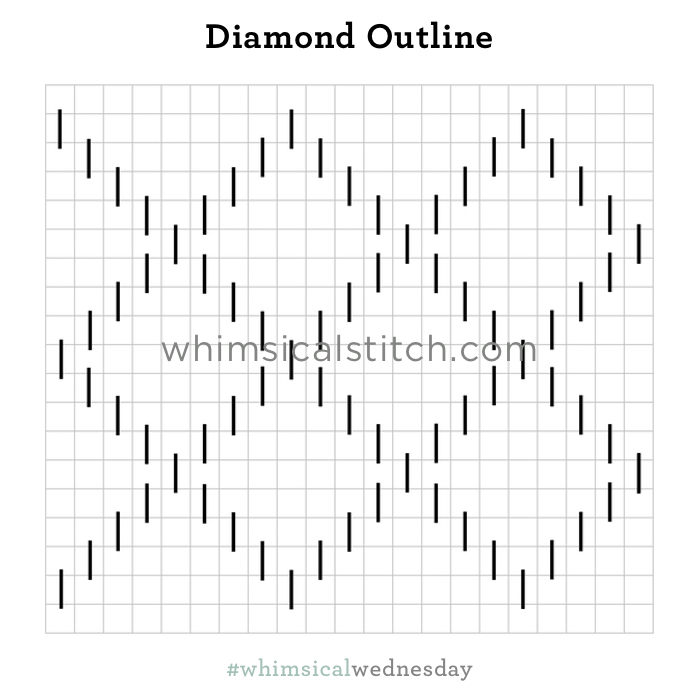Today’s stitch comes from my Christmas pillow stash (which is, um, extensive). I hope you like the stitch as much as I do!
The stitched sample uses Elegance on 18-mesh on whimsicalstitch.com’s most popular Stitch Guide, Snowman Pillow, by Mary Lake Thompson (via Melissa Shirley Designs). It is a blast to stitch and it never fails to make me smile when I pull it out from the pillow closet. (And, yes, I have a closet dedicated to needlepoint pillows. There will be NO judging.)
This perfectly symmetrical stitch is a wonderful open stitch that works for many types of areas. Consider it for a background for a dramatic floral. It makes a great sky (as illustrated). I’ve seen it as a tabletop, floor, wall, and pumpkin! It’s a wonderful universal stitch.
You could fill the center with straight stitches with a contrasting fiber. As you well know, I love contrasting finishes. That said, consider mixing colors for a really fun interpretation of this stitch.
This stitch diagram, along with all other #whimsicalwednesday and #smallspacesunday stitch diagrams, can also be found on a Pinterest board here.
Be sure to follow whimsicalstitch.com on Facebook, Pinterest, Instagram, and Twitter.
If you like what you see on this blog, want to learn some very creative decorative stitches, and how to put them all together, whimsicalstitch.com sells Stitch Guides and Stitch Concepts for Melissa Shirley Designs, Zecca Designs, Patience Brewster, and many more. Click here to see the newest guides and click here to see the entire collection.
I hope you have the perfect spot for this stitch! Please enjoy!
Programming Note
I am taking next week off! #whimsicalwednesday will return on November 7! Have a most wonderful Halloween! And don’t forget to vote!
A Note about Diagrams
I use color in diagrams to make them as clear as possible. The primary function of different colored lines is to illustrate a stitch sequence. For example, layering of colors demonstrates you add them in that order. They can also provide ideas on how to integrate additional threads (one line for each color). Or, you can use the same thread for all color lines. That's where I encourage you to use your imagination for the space you are stitching!



